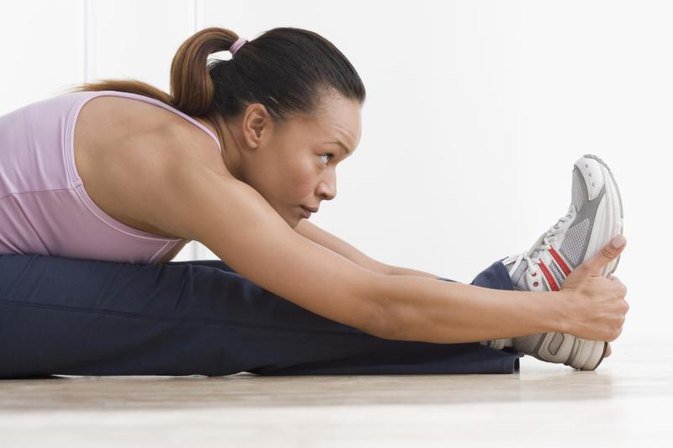Author
by
http://www.livestrong.com/article/66453-differences-between-track-running-shoes/
by
When breaking into the world of competitive or recreational running, you may be overwhelmed by the sheer volume of shoes you can buy or may be confused about where to start. With a little knowledge about the types and categories of running shoes, navigating the running store won’t be a challenge any longer. The most important thing to know is that two basic types of shoes exist -- running shoes and track (or competition) shoes -- each with its own purpose and design.
From Leather to Rubber
The first athletic shoes were designed in the 18th century in England and were made entirely of leather. When track racing became popular, these shoes were given long metal spikes to give the racer traction, but the leather proved to be impractical for long-term use, as the leather stretched and became misshapen under wet conditions. The first rubber-soled shoes, which were termed “sneakers” for the wearer’s ability to sneak up on someone quietly in his new shoes, came out in 1917 and were made popular by the brand Keds. With the running boom in the 1970s, Bill Bowerman, the owner and creator of Nike, first poured rubber into his wife's waffle iron and created the waffle-soled racing shoe. Nike and Adidas went on to market a shoe specifically for running with foam cushioning and waffled rubber tread. Since the 1970s, new companies and types of shoes have blossomed with advances in technology, such as air cushioning and gel pads.
Types of Running Shoes
A running shoe is what most people picture if they hear “tennis shoes” or “sneakers.” This type of shoe features a thick layer of foam or cushioning around the bottom and most likely has a mesh outer layer and a firm, textured sole. A half dozen reputable brands create quality training shoes, which are prominent in specialty running and sports stores. Running (or training) shoes are ideal for everyday running and workouts but may be too cumbersome for short races. Almost most shoes don’t vary much between brands, the one complication for buying a training shoe is deciding how much stability or cushion you want. Every brand creates training shoes that range from neutral to high stability, which refers to how many extras the shoe offers to correct biomechanical problems. A neutral or cushion shoe is only lined with foam and has no features to adjust the wearer’s stride, whereas a high-stability shoe aims to correct overpronation by adding dual-density foam or other structural supports. To determine which type of training shoe is right for you, have a friend watch you walk or run. If your ankles lean in when you take a step or you are flat footed, stability is the right choice for you.
Types of Track Shoes
Two types of track shoes are available: racing flats and racing spikes. A racing flat looks like a thin, pared down version of the typical training shoe. It has about half the built-in cushion of a training shoe and is designed to weigh as little as possible while still giving some support. These shoes should be used for longer races (5k and up) as well as for some interval training. Racing flats do not have enough support for daily training, especially for the injury-prone runner, but because they weigh much less than training shoes, they are ideal for running fast over long distances.
A recreational runner will be hard pressed to find a use for racing spikes. They are extremely lightweight shoes with no support and feature metal spikes that screw into the soles. They are specifically designed for either sprinting on the track or cross-country races. Track spikes are usually made of hard plastic and are angled to keep the runner on his toes, whereas cross-country spikes are composed primarily of rubber with extra grip all the way through the heel.
A recreational runner will be hard pressed to find a use for racing spikes. They are extremely lightweight shoes with no support and feature metal spikes that screw into the soles. They are specifically designed for either sprinting on the track or cross-country races. Track spikes are usually made of hard plastic and are angled to keep the runner on his toes, whereas cross-country spikes are composed primarily of rubber with extra grip all the way through the heel.
Do Your Research
The most important reason to do your research and to select the proper shoe is injury prevention. Each type of shoe is designed for a specific type of training and foot type, so for the best protection and running success, choose an appropriate shoe. Most running shoes are designed to give the wearer optimal cushion and support for 300 to 500 miles or three to six months. After that, the cushion begins to fall, and the runner may suffer from shin or arch pain. The upper for track shoes will most likely be the first part to show wear, so as soon as the seams split or a toe pokes out, it's time to get new shoes.
Making Your Selection
The best thing to do before investing money in running or racing shoes is to find a reputable running specialty store. The sales associates are trained to assess your specific needs and can recommend the appropriate shoe. If you can’t find one nearby, make a list of what you need running or racing shoes for, and compare it to the previous descriptions. If you are training for your first 5k, buy a training shoe. If you need footwear suitable for a cross-country race, purchase cross-country spikes. With this background knowledge, you should be able to buy a shoe to meet any running or racing need.
http://www.livestrong.com/article/66453-differences-between-track-running-shoes/







No comments:
Post a Comment